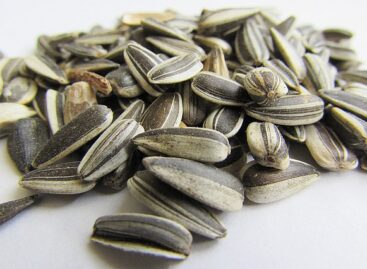Global food commodity prices rebound in August
Global food commodity prices rebounded rapidly in August after two consecutive months of decline, led by strong gains in the international price quotations for sugar, wheat and vegetable oils, the Food and Agriculture Organization of the United Nations (FAO) reported today.

The FAO Food Price Index averaged 127.4 points in August, up 3.1 percent from July and 32.9 percent from the same month in 2020. The index tracks monthly changes in the international prices of commonly-traded food commodities.
The FAO Sugar Price Index rose 9.6 percent from July, pushed up by concerns over frost damage to crops in Brazil, the world’s largest sugar exporter. The increase was mitigated by good production prospects in India and the European Union as well as by a decline in crude oil prices and a weakening of the Brazilian real.
The FAO Vegetable Oil Price Index increased by 6.7 percent in August, with international palm oil prices reverting to historic highs due to protracted concerns over below-potential production and resulting inventory drawdowns in Malaysia. Quotations for rapeseed oil and sunflower oil also rose.
The FAO Cereal Price Index averaged 3.4 percent higher in August than July. World wheat prices jumped by 8.8 percent due to reduced harvest expectations in several major exporting countries. Maize prices, by contrast, declined 0.9 percent as improved production prospects in Argentina, the European Union and Ukraine moderated the lowered production forecasts in Brazil and the United States of America. International rice prices remained on a downward trajectory.
The FAO Meat Price Index edged up slightly in August, as strong purchases from China supported ovine and bovine meat prices and solid import demand from East Asia and the Middle East buoyed poultry prices. Pig meat prices, by contrast, fell due to China’s continued decline in purchases and weak internal demand in Europe.
The FAO Dairy Price Index was down marginally from July, as international quotations for milk powders declined amid a weak global import demand and seasonally rising export availabilities in Oceania, more than offsetting rising butter and cheese prices.
World cereal supplies remain adequate despite lower production prospects
Global cereal production in 2021 is forecast to reach 2 788 million tonnes, up by 0.7 percent from the year before but below July’s expectations, according to FAO’s new Cereal Supply and Demand Brief, also released today.
World wheat output is now expected to contract by 0.7 percent to 769.5 million tonnes this year, due predominantly to the negative impact of prolonged drought conditions in North America as well as adverse weather in Kazakhstan and the Russian Federation.
Global coarse grains output is forecast to grow by 1.3 percent in 2021 to 1 499 million tonnes, even as production in Brazil is expected to contract. Global rice output is seen rising by 0.9 percent year-on-year to reach an all-time high of 519 million tonnes, buoyed by record yields reported for Viet Nam.
FAO now projects worldwide cereal utilization in 2021/22 to rise by 1.4 percent from the previous marketing year to 2 809 million tonnes, supported by a strong growth in feed use as well as higher food consumption. The July forecast for global cereal stocks by the close of seasons in 2022 has been lowered to 809 million tonnes, a 0.9 percent drop from opening levels.
Global rice stocks are on track to reach their second highest level on record, while dry weather is expected to squeeze wheat inventories – with ending stocks in the United States of America reaching an eight-year low and those of Canada dipping to their lowest level in 40 years. Overall, the world stocks-to-use ratio for cereals is projected at 28.1 percent, down from 29.9 percent in 2021/22 “but still indicating a relatively comfortable supply from a historical perspective,” FAO said.
World trade in cereals is now expected to decline in 2021/22, contracting by 1.3 percent to 466 million tonnes with foreseen decreases in wheat and coarse grains outweighing a rising world trade of rice.
Related news
The Ministry of Agriculture has issued a notice on the use of ENAR data in support policy
In the case of animal-based subsidies financed from EU funds,…
Read more >Farmer-centric agricultural policy after 2027 receives unanimous support
The EU member states’ agriculture ministers have adopted Council conclusions…
Read more >Slow but steady growth in sunflower producer prices
Oil World experts expect a global sunflower seed harvest of…
Read more >Related news
The Christmas season is starting earlier and earlier: value for money is the key
This year, 40 percent of Hungarians brought their Christmas shopping…
Read more >They want it to be premium, but also sustainable – expectations of the youngest generation
GlobalData’s latest report, “Demographics in Retail and Apparel” – which…
Read more >In six months, consumers donated 100 million forints to charitable causes through the mandatory redemption system
Through the deposit bottle return system, which began six months…
Read more >








